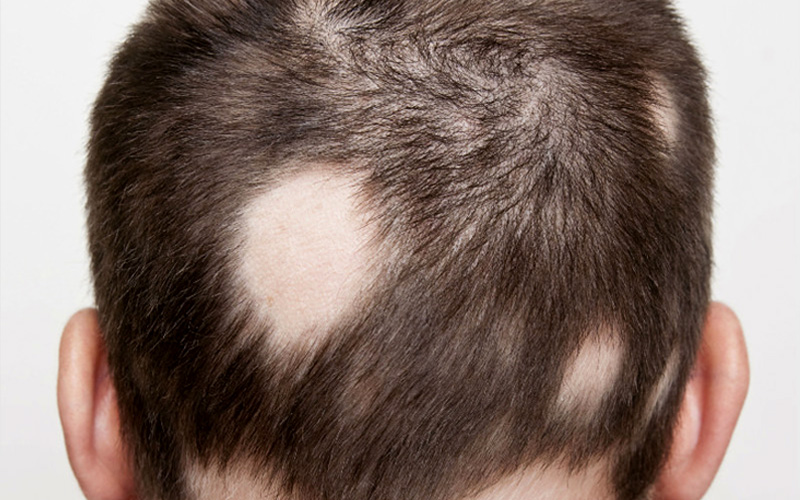Living with alopecia areata can be an emotional and physical challenge, especially in a place like Dubai where appearance often plays a significant role in professional and social life. If you’re experiencing patchy hair loss and considering a permanent solution, you might wonder if a hair transplant is the right choice. But is this common procedure really recommended for alopecia areata sufferers?
Understanding the nature of alopecia areata and how it differs from other types of hair loss is key to determining the best treatment approach.

What Is Alopecia Areata?
Alopecia areata treatment (علاج الثعلبة البقعية) is an autoimmune condition where the immune system mistakenly attacks healthy hair follicles, causing hair to fall out in small, round patches. It can affect the scalp, beard, eyebrows, and even body hair. In some cases, it progresses to complete scalp hair loss (alopecia totalis) or total body hair loss (alopecia universalis).
Unlike typical pattern baldness or age-related thinning, alopecia areata can be unpredictable. Hair may fall out and grow back multiple times over months or years, making it difficult to manage with standard hair restoration methods.
Can Hair Transplant Treat Alopecia Areata?
Hair transplants are most effective for individuals with stable, non-autoimmune-related hair loss. That said, they are not usually recommended as a first-line treatment for alopecia areata, and here’s why:
Unstable Hair Loss :
The autoimmune nature of alopecia areata means hair loss can recur unexpectedly. Even if transplanted follicles take root initially, they may be targeted by the immune system later, leading to poor results.
Unpredictable Flare-Ups:
Hair transplant procedures require a stable donor and recipient area. With alopecia areata, it's hard to guarantee that either will remain unaffected by the condition, making results uncertain.
. Better Alternatives Exist:
Many non-surgical treatments offer more consistent results for alopecia areata. These include topical solutions, oral medications, and innovative techniques like PRP therapy.
When Is Hair Transplant an Option?
In rare cases, hair transplant may be considered for alopecia areata sufferers in Dubai, but only under specific conditions:
- The disease is inactive or stable for at least 1–2 years
- There is no new hair loss or patch formation
- Donor areas (usually the back of the scalp) are unaffected
- All other medical therapies have been exhausted or proven ineffective
Even in these cases, patients must be aware of the risks and understand that results are not guaranteed.
Alternative Alopecia Areata Treatment in Dubai:
Before considering hair transplant surgery, it’s important to explore less invasive treatments that are often effective in stimulating regrowth and controlling symptoms.
Topical Treatments:
These include corticosteroids or other immune-modulating medications that help suppress the autoimmune attack and encourage regrowth.
Platelet-Rich Plasma (PRP) Therapy:
PRP is increasingly popular in Dubai as a natural method to stimulate hair follicles. It involves using your own blood plasma, rich in growth factors, to rejuvenate damaged follicles.
Microneedling:
Often paired with serums or topical medication, microneedling can help increase absorption and effectiveness of other treatments.
Oral Immunosuppressants:
In more severe cases, doctors may prescribe systemic medications to help control the immune response.
Key Considerations Before Making a Decision:
If you're dealing with alopecia areata in Dubai and thinking about a hair transplant, ask yourself the following:
- Has my condition been stable for a significant period?
- Have I explored non-surgical treatments?
- Are my expectations realistic?
- Am I aware of the potential risks and limited success rate?
It’s essential to consult with a qualified professional who can evaluate your specific case and guide you through all available options.
Frequently Asked Questions:
Is hair transplant completely off the table for alopecia areata?
Not entirely. It may be an option if the condition has remained inactive for years. But for active cases, it is not usually recommended.
What’s the biggest risk of doing a transplant with alopecia areata?
The main risk is graft failure due to the autoimmune attack resuming and destroying the transplanted follicles.
Do PRP and topical treatments work better in Dubai’s climate?
While climate alone doesn’t impact effectiveness, consistent care and follow-up in Dubai’s medically advanced environment can enhance outcomes.
Is there any permanent cure for alopecia areata?
There is no guaranteed cure, but many people see long-term remission with proper treatment and lifestyle adjustments.
Conclusion:
While the idea of a hair transplant might seem like an appealing solution to alopecia areata, it’s not always the most effective or recommended path—especially in active or unpredictable cases. Thankfully, there are several proven options for Alopecia areata treatment in Dubai (علاج الثعلبة البقعية في دبي)that are less invasive, more affordable, and tailored to the unique nature of this condition.
If you're experiencing symptoms, don't rush into surgical solutions. Instead, explore all your options with the guidance of a qualified expert to find the safest and most effective way to reclaim your confidence and your hair.




Comments